Ghajar – A Village Neither Here Nor There
Text and photos by Lydia Aisenberg
Ghajar (pronounced Rajar) is the only Alawite village in Israel. Well, sort of in Israel, that is!
Although all 2,800 residents carry Israeli identity cards, the locals will tell you they are Syrians who have ended up, through no fault or intention of their own, stuck in a sort of not-here-not-there triangle, straddling borders between Syria, Lebanon and Israel since being taken over by Israel during the 1967 Arab-Israel war.
Prior to 1967, the people of Ghajar village held Syrian citizenship and the men served in the Syrian Army. With roots in Shia Islam, the Alawites represent around 12% of Syrian citizens but are a powerful minority, with the late Alawite Hafez al-Assad and now his son Bashar al-Assad having ruled the country for over 50 years.
Our recent visit to the Israeli northern border was prompted by the story behind the unbelievably complicated situation that the residents of the village of Ghajar have found themselves in over the years. This visit was an attempt to grasp a deeper understanding of the predicament of this not-here-not-there village, whose residents try to live a normal life in an abnormal reality. On top of everything else, the village has for years been deemed a closed military zone by Israel.
This writer had visited Ghajar on a number of occasions in the late 1970s and early 1980s – but not since. The complicated and more than confusing dilemma of the physical, factual and disputed situation of Ghajar has further deepened since then, especially since the withdrawal of Israeli troops from Southern Lebanon in May 2000 and the continued clashes between Israeli troops and the Iranian-backed Hezbollah operatives, firmly ensconced, to this day, along the nearby border with Lebanon.
Nowadays an Israeli Border Police checkpoint is situated at the main entrance to the village and visits to Ghajar must be coordinated with the IDF, and Israeli identity card numbers provided well in advance. All visitors, immaterial if close friends and guests personally invited by the villagers, or groups of curious folks who have booked a visit, must leave the village by 10 pm, with no exceptions to the rule.
Our visit was coordinated well ahead of time with both the IDF and a local Ghajar resident guide, but even then, we had to wait almost an hour at the checkpoint before that person – N, a well-known local personality who works in security and therefore cannot be mentioned by name, nor photographed – came to the checkpoint, verified the identity of his visitors and we were allowed through.
The main – and only – entrance to Ghajar is most impressive and has to be the most attractive of approaches to any checkpoint in the country. Large, meticulously laid out beds of colorful flowers, some arranged in the shape of hearts, cover the high banks of the approach road that leads up to a large roundabout and an attractive Welcome to Ghajar sign –in Arabic, Hebrew and English.
The roundabout at the entrance sports an eye-popping 3-tiered water fountain, almost like a wedding cake in appearance, and the swishing sound of the water beckons one forward. However, just around a bend in the road one comes to the Israel Border Police manning the checkpoint, a collection of drab, unwelcoming huge concrete blocks, and a shelter made from a former shipping container with a large Israeli flag strapped to its roof and flapping furiously in the wind.
The first impression of present day Ghajar after such a long hiatus was of absolute amazement at the village's physical development – the eye-catching, meticulously laid-out flower beds everywhere, intricate topiary, more fountains and, gleaming in the sunshine, enormous white marble sculptures of those revered by the Alawites, including Ali, cousin and son-in-law of the Prophet Muhammad.
The main road leading into the village is lined with attractive white stone-built 2 or 3-storey homes, many painted in varying pastel colors, with plentiful flower beds and garden sculptures. At the perimeter fence, a large, attractively tiled, covered vantage point offers an outstanding view over the sharp drop to the fast-running, audibly bubbling Hasbani river below – and across the narrow physical Israel-Lebanon divide at this point.
An above-ground pipeline leads up to the elevated Ghajar village on one side of the creek, and another wends its way up the opposite high embankment. This pipeline carries water to a Lebanese village where farmers can be seen working in their fields, and the sounds of tractors, braying of a donkey and a barking dog can clearly be heard across the steep, rocky divide.
A small blue and white painted inspection station sits alongside the pump house at the water edge below. The letters U.N. (United Nations) are painted clearly on the roof. Whilst standing at the vantage point listening to N giving an in-depth explanation about the terrain, the past and present complex situation of Ghajar's Alawite residents, and incidents involving the Hezbollah operatives holed up far too close for comfort, a patrolling U.N. helicopter passes overhead, drowning out his voice.
N simply shrugs his shoulders, waits for the helicopter to pass over – turn and return along the same flight path – and continues exactly where he left off minutes before.
Moving along the protective fence built along this side and the northern part of the village, one can see deeper into Lebanon. In the near distance, yellow Hezbollah flags are visible and white jeeps, U.N. clearly marked on doors and roofs of the UNIFIL forces stationed in the vicinity, kick up clouds of dust as they patrol the area.
It is here that one can see an impressive extra high, and recently built wall/fence surrounding the most northern part of the village. The fence sits on land designated as Lebanese soil, from where in the past armed Hezbollah terrorists entered the village and threatened the residents, as well as operatives using Ghajar as a conduit to smuggle drugs and weapons into Israel.
N explains that the villagers built and bore the cost of the fence themselves, after convincing the U.N., who refused permission for its construction on land designated Lebanese, that they were under threat from attacks by ferocious wild boar!
Until the Six Day War of 1967, Ghajar was firmly under Syrian rule, nestled on top of an elevated area in a wide valley at the base of the then Syrian-held lower hills of the Golan Heights that were taken by Israel in that war.
However, after entering the village in 1967, confusion arose in the ranks of the IDF as to under whom Ghajar fell, Lebanon or Syria. The IDF withdrew, only to return at a later stage at the request of village elders. This request came after Lebanon rebuffed their request to be annexed to them and they realized that Israel was probably not intending to return the Golan Heights to Syria in the near future – if at all – and they felt they were being kicked from pillar to post, with no safety net.
It was the United Nations who drew up what is known as the Blue Line, marking 120 km of the south Lebanese-Israeli border. Unfortunately, they drew the line in such a way that the portion of Ghajar that already extended into Lebanon was, on paper that is, split from the rest of the village.
Although the entire village in present times is a closed military area under Israel, officially the Blue Line still stands, leaving villagers with an internal "over here, and over there" dilemma, even though all residents have Israeli identity cards and there are no restrictions on working, studying and living elsewhere in Israel – although most of those working away return to the village at weekends.
The village boasts an extremely high percentage of university graduates, among them many medical doctors and other health workers employed in central Israeli hospitals, as well as lawyers and other professionals, all working in Israel – quite a few in management positions in Galilean hotels and local kibbutz-based industries, or running their offices from the close-by northern town of Kiryat Shmona.
Walking around Ghajar one is struck by the pristine internal landscaping and squeaky clean public spaces.
Our proud guide jokes about his having married a lady from "over there" and points down the center of the main road, his right hand waving to one side, left to the other. From the top of the road, the right side is in Israel, left in Lebanon. Having entered through that road, we were unaware that the houses on the left were in Israel, and on the right side – on paper that is – Lebanon, and that we were actually driving on the U.N. blue demarcation line!
A local provisions shop can boast part of their business being in Israel and part in Lebanon – the U.N. blue line literally running down the aisle between the shelves.
We were taken by N to a public park known as the Peace Park and were again struck by the gardens, spotless pathways and shaded corners – and yet another fountain with an impressive central figure, a half-moon Islamic sculpture and, under a large stone archway, a tall sculpture of the Virgin Mary – apparently a gift from a German sculptor who visited the village some years ago.
N explains that Alawites respect and have incorporated certain aspects of all religions into their own. They are presently working on a large Magen David that will also be erected in Peace Park, where almost every afternoon and evening sees local families enjoying the space together as a warm, embracing and strong community – immaterial from which side of the line they might be, he jokes.
A member from each extended family represents them in meetings held by the village leaders in the local Beit HaAm, and as an example, N tells of a ruling that had recently been made following unruly behavior of a Ghajar youth. His punishment was being banished from entering the village for a month – during which time he slept in a cowshed belonging to his family, a dilapidated structure situated in an open area just outside the village but under the watchful eye of IDF soldiers.
A visit to Ghajar is fascinating, complex and compelling, leaving one in absolute awe at the determination of the villagers to make the best of their frustratingly unique out-on-a-limb situation, successfully instilling in their children, who speak Arabic and Hebrew, a deep pride, sense of value and honor in their history, religion and rich culture.
From Lydia Aisenberg, October 2022
IDF restrictions lifted on divided village
Just a few short weeks after visiting Ghajar and writing this article, which was published both in Israel and abroad, the severe security restrictions of the last 22 years that were applied to the village were lifted!
I wish I could say that my article influenced the decision but I have no illusions there. However, I am delighted that the residents of the village, all of whom hold full Israeli citizenship, will now be able to conduct their lives in a more normal way even though their general, geographical and security situation is still complex.



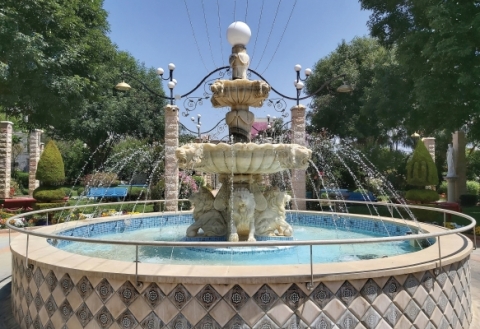
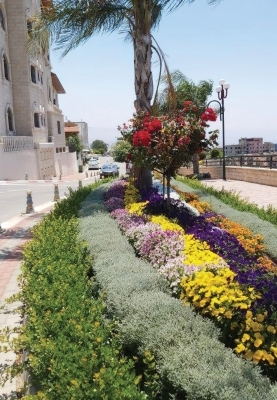
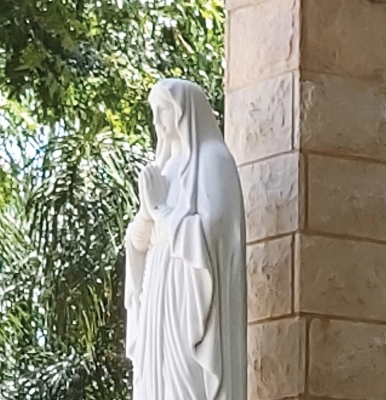
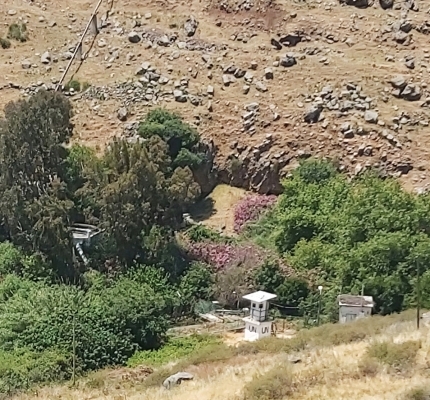
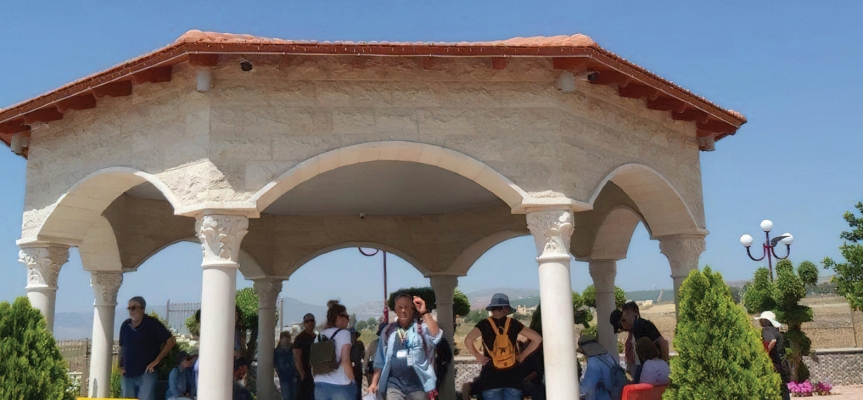




Comments